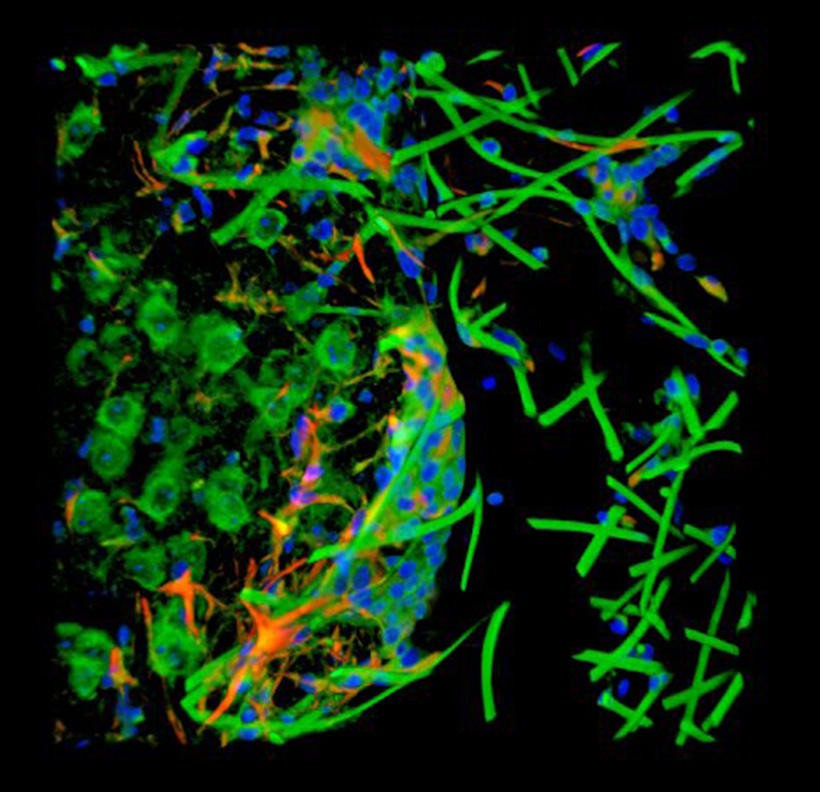In theory, a merger between AI and the human brain still sounds like science fiction. In the hands of Elon Musk, however, it may very well soon be science fact.
According to the Wall Street Journal, Musk is the primary financier behind Neuralink, a company experimenting with ‘neural lace’. The technology – which takes its name from Iain M. Banks’ Culture series of sci-fi novels – infuses the brain with a nanotech mesh that merges with brain cells in order to create a synthetic link between biological and digital intelligence.
We’ve already seen crude forms of this technology realised; carbon electrode arrays have been used for some years to monitor neurotransmissions in patients with such ailments as Parkinsons’ and spinal cord injury. Yet these arrays have short lifespans, and only rudimentary means of regulating a subject’s neurological functions. Neural lace, on the other hand, is engineered to merge with users on a cellular level.
In short, it will turn us into cyborgs.
That Musk would be involved in such a project should come as no surprise. The prolific entrepreneur – whose projects include Tesla, SpaceX, Solar City, and Hyperloop – has warned artificial intelligence is developing at such a rate that it could make humanity redundant before we even realise it’s done so.
“With artificial intelligence, we are summoning the demon. You know all those stories where there’s the guy with the pentagram and the holy water and he’s like, yeah, he’s sure he can control the demon? Doesn’t work out,” he declared during a speech at MIT in 2014.
Part of the solution, Musk believes, is technology like neural lace that will allow us greater insight into the evolution of AI by providing direct interface with the software. That we should find relevance in a world of sophisticated computers by becoming more like a computer ourselves sounds ironic, but with Musk saying “if somebody doesn’t do it (develop neural lace), then I think I should do it,” at the 2016 Code Conference a mere month before Neuralink was registered as a company, it’s clear he’s taking a ‘better safe than sorry’ approach in the face of what he fears will manifest as an AI apocalypse.
All that said, neural lace technology deliverable on a global scale is still many years away, and not just due to the fact that programming neural code is something never tried before. Today, very few people have any kind of complex implants installed in their brains, and those that do generally take such a dangerous route when it is the only one left available to them. To make it viable, they must also make it safer.
So far, little information has been released about Neuralink, but it’s expected that Musk will reveal more in early April. Make sure you listen in; what he’ll have to share may just define your future.

